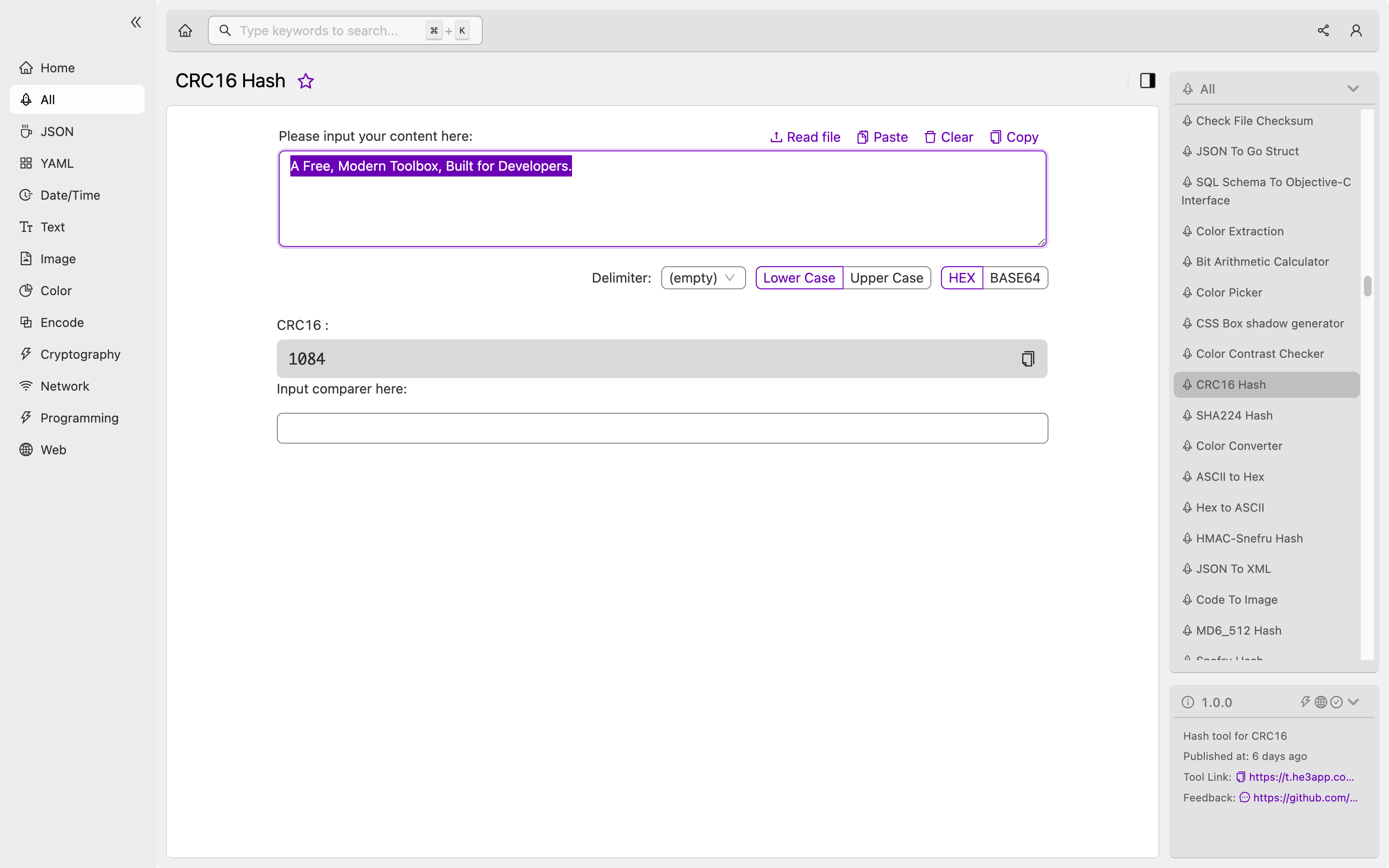Introduction
As a developer, ensuring data integrity is of utmost importance. In order to achieve this, various hash functions such as CRC16 Hash are used. The CRC16 Hash is a widely used hash function that calculates a checksum for a data block. This checksum can be used for error detection and data validation. In this article, we will explore the concept of CRC16 Hash, explain how it works, and discuss its practical usage scenarios.
What is CRC16 Hash?
CRC16 (Cyclic Redundancy Check) Hash is a hash function that calculates a 16-bit checksum of a data block. It is a cyclic code that utilizes polynomial division to derive the checksum. The result of the CRC16 Hash is a unique fixed-length hash value that can be used to verify data integrity, detect errors, and validate data.
How does CRC16 Hash work?
The CRC16 Hash works by dividing the input data block by a predefined polynomial. The resulting remainder is the checksum value. The polynomial used for CRC16 Hash is x^16 + x^15 + x^2 + 1. The input data is processed through the polynomial division algorithm, and the resulting remainder is the 16-bit checksum. The algorithm ensures that any changes to the input data will result in a different checksum value, enabling the detection of errors or data tampering.
Sample Code
To calculate the CRC16 Hash in Python, you can use the crcmod module:
import crcmod
crc16 = crcmod.predefined.Crc('crc16')
input_data = b'Hello World!'
checksum = crc16.calculate(input_data)
print(hex(checksum))Scenarios for Developers
The CRC16 Hash is a fast and efficient hash function that finds its usage in various scenarios, such as:
- Data communication systems to detect errors and ensure data integrity
- File transfer protocols to validate data
- BitTorrent clients to ensure data consistency and prevent data corruption
- Bank transaction systems to validate the correctness of data
Key Features
Below are some key features of CRC16 Hash:
| Feature | Description |
|---|---|
| Fixed-length hash | The CRC16 Hash produces a fixed-length 16-bit hash |
| Fast computation | The algorithm for CRC16 Hash is parallelizable and can be computed efficiently |
| Error detection | Any change in the input data results in a different hash value, making it useful for error detection |
| Data validation | The hash value produced by CRC16 Hash can be used to validate data |
Misconceptions and FAQs
Misconception: CRC16 Hash is cryptographically secure
CRC16 Hash is not a cryptographically secure hash function. It can be easily reversed, and the checksum value can be manipulated to create different input data. It is primarily used for error detection and data validation.
FAQ: What is the difference between CRC16 Hash and other hash functions?
CRC16 Hash produces a fixed-length 16-bit hash, while other hash functions such as SHA-256 produce variable-length hashes of 256 bits. Furthermore, CRC16 Hash is not cryptographically secure and is primarily used for error detection and data validation.
FAQ: Can CRC16 Hash detect all errors in data?
CRC16 Hash can detect most errors in data, but it is not foolproof. It is possible for two different data blocks to produce the same checksum, known as a hash collision. However, the probability of a hash collision in CRC16 Hash is low.
How to
You can use CRC16 Hash tool in He3 Toolbox (https://t.he3app.com?3861 ) easily.

Conclusion
CRC16 Hash is a reliable and efficient hash function that calculates a fixed-length checksum of a data block. It is primarily used for error detection, data integrity, and data validation. As a developer, understanding the concept of CRC16 Hash and its practical usage scenarios can help you ensure the integrity of your data.
